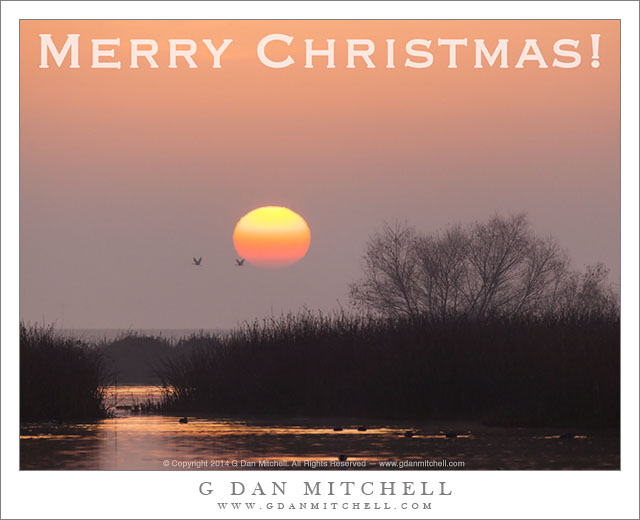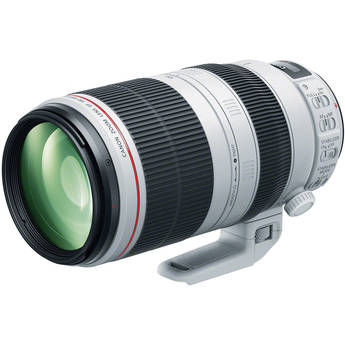The post you are looking for is found here.
Merry Christmas 2014!

Two Cranes, Sunrise. © Copyright 2014 G Dan Mitchell – all rights reserved.
I hope you have a wonderful holiday and a great new year! (And, yes, this photograph is the kind of scene I think of during this season in California.)
 G Dan Mitchell is a California photographer and visual opportunist whose subjects include the Pacific coast, redwood forests, central California oak/grasslands, the Sierra Nevada, California deserts, urban landscapes, night photography, and more.
G Dan Mitchell is a California photographer and visual opportunist whose subjects include the Pacific coast, redwood forests, central California oak/grasslands, the Sierra Nevada, California deserts, urban landscapes, night photography, and more.
Blog | About | Flickr | Twitter | Facebook | Google+ | 500px.com | LinkedIn | Email
Text, photographs, and other media are © Copyright G Dan Mitchell (or others when indicated) and are not in the public domain and may not be used on websites, blogs, or in other media without advance permission from G Dan Mitchell.
Autumn Cottonwood, Kolob Canyon

Autumn Cottonwood, Kolob Canyon. Zion National Park, Utah. October 28, 2014. © Copyright 2014 G Dan Mitchell – all rights reserved.
A bright yellow autumn cottonwood tree in a valley below red rock cliffs, Kolob Canyon
I have visited these trees — and this tree — in Zion National Park’s Kolob Canyon area before. I’m familiar with this beautiful little valley that runs up toward the head of a canyon bounded by red rock cliffs, and shaded from the early morning sun. Each time I have visited it has been a bit later in the morning when direct light was still blocked, but when ambient light began to fill in the shadows a bit.
A creek runs up (or down, depending on your perspective!) this little canyon, and it is lined with vegetation, notably including cottonwood trees. Higher up there are conifers, whose green color stands out against the red of the Utah rock. Further along the canyon narrows, twists around turns and disappears from sight. Although the colors might have been even brighter few days before this visit, I like the way that the colors of the foreground tree contrast with the more skeletal shapes of the bare and nearly bare plants beyond.
 G Dan Mitchell is a California photographer and visual opportunist whose subjects include the Pacific coast, redwood forests, central California oak/grasslands, the Sierra Nevada, California deserts, urban landscapes, night photography, and more.
G Dan Mitchell is a California photographer and visual opportunist whose subjects include the Pacific coast, redwood forests, central California oak/grasslands, the Sierra Nevada, California deserts, urban landscapes, night photography, and more.
Blog | About | Flickr | Twitter | Facebook | Google+ | 500px.com | LinkedIn | Email
Text, photographs, and other media are © Copyright G Dan Mitchell (or others when indicated) and are not in the public domain and may not be used on websites, blogs, or in other media without advance permission from G Dan Mitchell.
Canon EF 100-400mm f/4.5-5.6L IS II Lens — A First Look
(Note: Updated 12/24/14 to add thoughts about “who should buy” this lens.)
 Canon EF 100-400mm f/4.5-5.6L IS II
Canon EF 100-400mm f/4.5-5.6L IS II
Canon recently released the successor to their venerable 100-400mm telephoto zoom lens, the new EF 100-400mm f/4.5-5.6L IS II lens. I have relied on the older model for some time now… but my copy of the new lens arrived a few days ago. Now that I have used it for a day of wildlife and landscape photography I would like to share some first impressions

Four Sandhill Cranes. San Joaquin Valley, California. December 22, 2014.
© Copyright 2014 G Dan Mitchell — all rights reserved.
First, a few technical details. The new lens covers essentially the same range as the older model — a focal length range of 100mm to 400mm and a variable aperture range of f/4.5 (at 100mm) to f/5.6 (at 400mm). Both lenses use a zoom mechanism that extends at longer focal lengths. However, there are some technical differences:
Continue reading Canon EF 100-400mm f/4.5-5.6L IS II Lens — A First Look
